#Andrey Klimov
Photo

“After landing” process render by Andrey Klimov
22 notes
·
View notes
Photo

Flex that you watch 3 hour movies
( Strixes’ Sabre )
#the seventh seal#seventh seal#The Devils#Night Porter#The Night Porter#Come and See#ivans childhood#andrei tarkovsky#kutte#ken russell#Liliana Cavani#button#pin#badge#art house#ingmar bergman#Elem Klimov
21 notes
·
View notes
Text
Klimov, despre aderarea R. Moldova: UE este astăzi, după părerea mea, un "Titanic" politic, iar cineva se grăbește totuși să se urce în el
Andrei Klimov, șeful Comisiei pentru protecția suveranității de stat și prevenirea ingerinței în afacerile interne ale Federației Ruse din cadrul Consiliului Federației, a declarat că Washingtonul vrea să aibă cât mai puțini concurenți geopolitici și că Statele Unite, deși nu sunt interesate de moartea socio-economică a UE, fac tot posibilul să se opună dezvoltării Europei.
Georgiana Arsene
În…

View On WordPress
0 notes
Photo

After landing, Andrey Klimov via ImaginaryAstronauts
43 notes
·
View notes
Text
hi hello today I bring you a pack of pics with Robert De Niro visiting USSR in the 1980s because yes


^ with Emil Loteanu
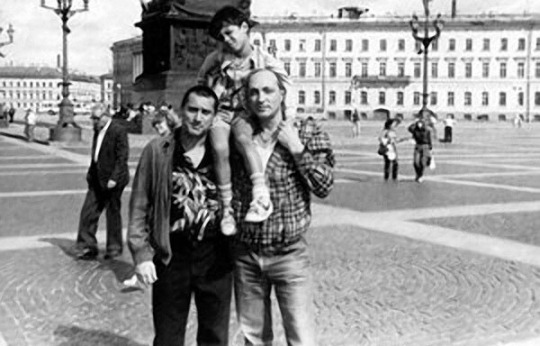
^ with Mikhail Kozakov (looks like the Palace Square in Leningrad)
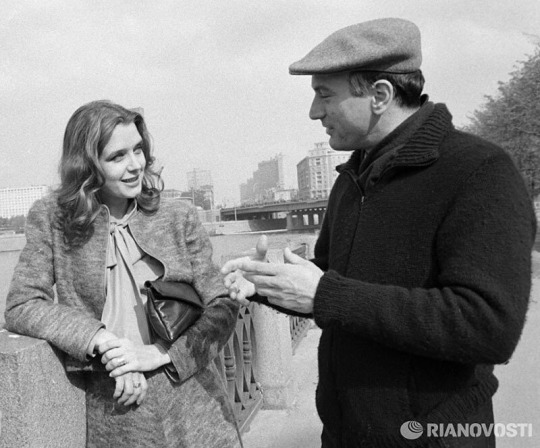
^ with Irina Alfyorova in Moscow
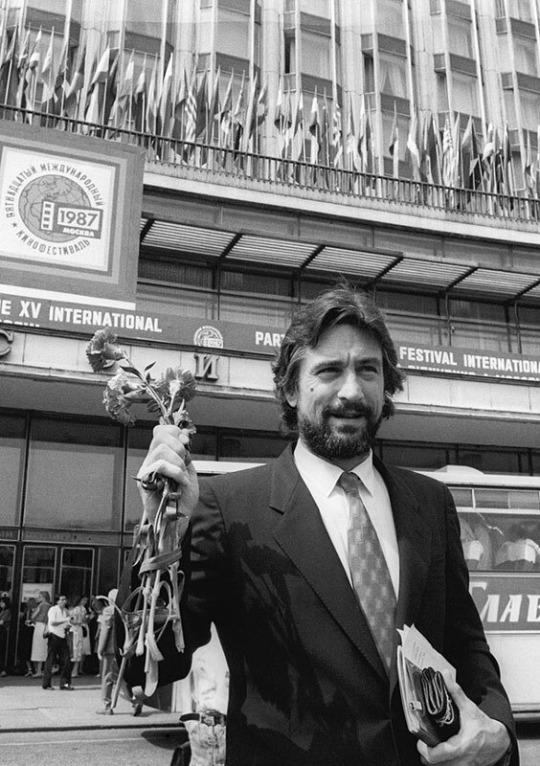
^ 1987, XV International Film Festival

^ 1987, with Eldar Ryazanov and Elem Klimov, same event

^ same event, with Federico Fellini
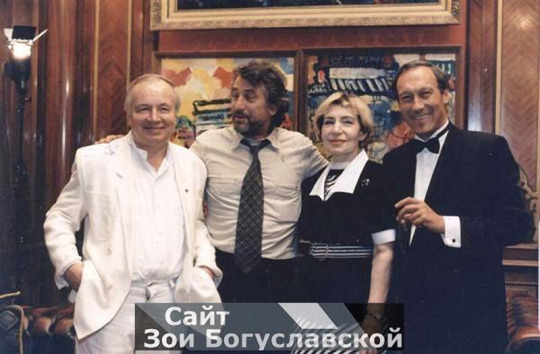
^ Andrei Voznesensky, Robert De Niro, Zoya Boguslavskaya, Oleg Yankovsky (the legend!! I love him so much! and they were friends too)

^ also with Yankovsky

^ in Tbilisi with Iya Parulava and Drena De Niro, 1987
20 notes
·
View notes
Photo
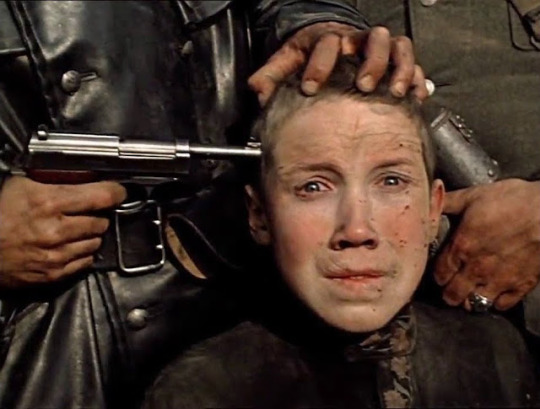
Aleksey Kravchenko in Come and See (Elem Klimov, 1985)
Cast: Aleksey Kravchenko, Olga Mironova, Ljubomiras Laucevicius, Vladas Bagdonas, Jüri Lumiste, Viktors Lorencs, Evgeniy Tilicheev. Screenplay: Ales Adamovich, Elem Klimov. Cinematography: Aleksey Rodionov. Production design: Viktor Petrov. Film editing: Valeriya Belova. Music: Oleg Yanchenko.
Elem Klimov's hard and harrowing Come and See runs a risk that it almost doesn't avoid: Parts of it are filled with such sustained horror and tension that a viewer can grow almost numb and dismissive. It elicits the response: "It's only a movie. These are actors." But such actors, especially Aleksey Kravchenko, then only 14 and picked by the director precisely for his lack of acting experience, even though Klimov was concerned that putting him through what the character must undergo in the film might be damaging to his mental health. (Kravchenko apparently survived intact, and went on to study acting and to build a steady career in film and television.) It's perhaps worth comparing the intensity of Klimov's film to that of Larisa Shepitko's The Ascent (1977), which put its actors through real hardships to create its portrait of life during wartime. Shepitko, married to Klimov, died in an automobile accident in 1979, and her film almost seems like a challenge to her husband to match or excel. In fact, Come and See seems to have exhausted Klimov as a filmmaker: He didn't make another film for the remainder of his life; he died at 70 in 2003. As harsh as the realism of Come and See is, it also has poetic touches in its cinematography and use of landscape, reminding me of another film about a war-torn boyhood, Andrei Tarkovsky's Ivan's Childhood (1966).
2 notes
·
View notes
Text
A list of films that sound essential to watch (from a brilliant book I have read over Christmas)
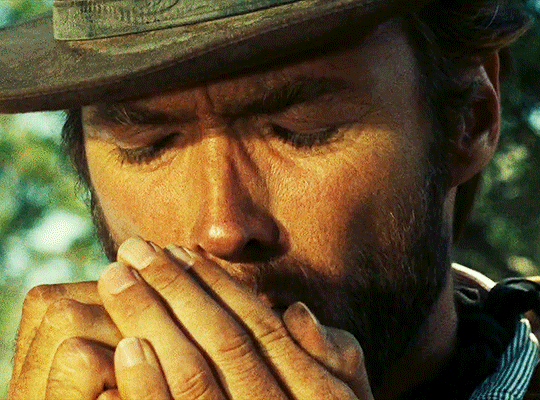
Film List: Christmas 2021, The Short Story of Film.
Unforgiven - Clint Eastwood (Western)Come and See - Elem Klimov (War)Ben Hur - William Wyler (Historical Epic)La Grande Illusion - Jean Renoir (Anti-War)Gomorrah - Matteo Garrone (Gangster)The Exorcist - William Friedkin (Horror)It Happened One Night - Frank Capra (Romantic Comedy)His Girl Friday - Howard Hawks (Screwball Comedy)Imitation of Life - Douglas Sirk (Melodrama)Triumph of the Will - Leni Riefenstahl (Propaganda)The Maltese Falcon - John Huston (Film Noir)Rebel Without a Cause - Nicholas Ray (Teen Drama)The Good The Bad and The Ugly - Sergio Leone [+2 previous in trilogy] (Spaghetti Western)Andrei Rublev - Andrei Tarkovsky (Art Film)Hatchet for the Honeymoon - Mario Bava (Giallo)The Bird With the Crystal Plumage - Dario Argento.Wanda - Barbara Loden (Feminist Film)The Towering Inferno - John Guillermin (Disaster Movie)The Hitcher - Robert Harman (Road Movie/Serial Killer Flick)Thelma and Louise - Ridley Scott (Road Movie)Come Drink With Me - King Hu (Martial Arts)Solaris - Andrei Tarkovsky (Sci-Fi)Blue Velvet - David Lynch (Psychological Thriller)Elephant - Gus Van Sant (Slow Film)
2 notes
·
View notes
Text
Ronnie Bell Following
The Petlyakov PE-8.
The Petlyakov Pe-8 was a Soviet heavy bomber designed before World War II, and the only four-engine bomber the USSR built during the war. Produced in limited numbers, it was used to bomb Berlin in August 1941. It was also used for so-called "morale raids" designed to raise the spirit of the Soviet people by exposing Axis vulnerabilities. Its primary mission, however, was to attack German airfields, rail yards and other rear-area facilities at night, although one was used to fly the People's Commissar of Foreign Affairs (Foreign Minister) Vyacheslav Molotov from Moscow to the United States in 1942.
Originally designated the TB-7, the aircraft was renamed the Pe-8 after its primary designer, Vladimir Petlyakov, died in a plane crash in 1942. Supply problems complicated the aircraft's production and the Pe-8s also had engine problems. As Soviet morale boosters, they were also high-value targets for the Luftwaffe's fighter pilots. The loss rate of these aircraft, whether from mechanical failure, friendly fire, or combat, doubled between 1942 and 1944.
By the end of the war, most of the surviving aircraft had been withdrawn from combat units. After the war, some were modified as transports for important officials, and a few others were used in various Soviet testing programs. Some supported the Soviet Arctic operations until the late 1950s.
Development of the Pe-8 began in July 1934, when the Soviet Air Forces (VVS) issued requirements for an aircraft to replace the obsolete and cumbersome Tupolev TB-3 heavy bomber. These requirements specified a bomber that could carry 2,000 kg (4,400 lb) of bombs 4,500 km (2,800 mi) at a speed greater than 440 km/h (270 mph) at an altitude of 10,000 metres (32,808 ft), figures that were twice the range, speed and service ceiling of the TB-3. The task was assigned to the Tupolev Design Bureau (OKB) where Andrei Tupolev handed the work to a team led by Vladimir Petlyakov and the project received the internal bureau designation of ANT-42. The resulting aircraft, a four-engined, mid-wing cantilever monoplane, was initially designated as the TB-7 (Russian: Тяжёлый Бомбардировщик, Tyazholy Bombardirovschik—Heavy Bomber) by the VVS and owed more to the streamlined design of the Tupolev SB than to the block-like design of the TB-3.
The bomber was built mainly of duralumin, with two steel spars in the wings, although the ailerons were fabric-covered. The pear-shaped monocoque fuselage required the pilots to sit in tandem, offset to the left. In the prototype, space for a fifth engine, an auxiliary Klimov M-100, was reserved inside the fuselage, in a fairing above the wing spars and behind the pilots. It was intended to drive a supercharger that supplied pressurized air to the Mikulin AM-34FRN engines, with the installation designated ATsN-2 (Russian: Agregat tsentral'novo nadduva—Central Supercharging Unit). Subsequent models omitted the internal engine, and provided seating for a flight engineer and radio operator, behind and below the pilots. The bombardier sat in the nose and manned a turret armed with a 20-millimeter (0.79 in) ShVAK cannon that covered a 120° cone ahead. A prominent chin gondola, nicknamed the 'beard', protruded beneath the nose. The dorsal gunner sat at the rear of the ATsN fairing with a sliding hood covering a 7.62-millimeter (0.300 in) ShKAS machine gun and another ShKAS mounted in a ventral hatch. The tail gunner had a powered turret with a ShVAK and, most unusually, there were manually operated ShVAK cannon mounted at the rear of each inner engine nacelle. Crewmen had access to these positions through the wing or by a trapdoor in the upper wing surface. The large internal bomb bay racks held up to 4,000 kg (8,800 lb) of bombs; external racks held a single 500-kilogram (1,100 lb) FAB-500 bomb under each wing.
The maiden flight of the unarmed prototype, piloted by M. M. Gromov and without the ATsN installation, occurred at Khodynka Aerodrome on 27 December 1936.[6] After successful initial trials, the ATsN system was installed for the State acceptance trials in August 1937 and the AM-34RNB engines were fitted during the tests.Gromov reported that the rudder was ineffective and that the outer engines overheated. Subsequent wind tunnel testing identified a problem with the aerodynamics of the radiators and nacelles. To solve this problem, the outer engines' radiators were moved into deep ducts under the inner nacelles and the rudder was enlarged and redesigned with a smooth skin.
Construction of a second prototype began in April 1936, incorporating lessons from the first aircraft and feedback from the VVS. Designers widened the fuselage by 100 mm (3.9 in); the 'beard' was also widened and the tail section was modified to lessen resistance and improve rudder function. A reconfigured control system included an autopilot and the engineers redesigned portions of the electrical system. The engines were changed to the more powerful AM-34FRNVs and a redesigned undercarriage was fitted to the airframe. Two additional fuel tanks increased the craft's range. The defensive and offensive armament was revised, and the bomber's weaponry expanded to twin ShKAS guns in the nose, nacelle and tail turrets and a dorsal turret with a ShVAK; this design eliminated the ventral gun. The bomb bay was modified to allow for a single 5,000-kilogram (11,000 lb) FAB-5000 bomb to be carried and provisions were added to carry VAP-500 or VAP-1000 poison gas dispensers under the wings.
The arrests of both Tupolev and Petlyakov in October 1937, during the Great Purge, disrupted the program and the second prototype did not make its first flight until 26 July 1938.[9] Although this prototype served as the basis for the series aircraft, further modifications were made to the armament. New weaponry included a retractable ShVAK in the MV-6 dorsal turret, another ShVAK in a KEB tail turret and a 12.7-millimeter (0.50 in) Berezin UBT machine gun in each ShU barbette in each inner engine nacelle. Another fuel tank further increased the range, and the 'beard' was removed entirely, replaced by a more streamlined nose. Authorization for production was slow for several reasons, including the Great Purge, but also due to the scarcity of resources, and a shortage of workers. Although production facilities in the Kazan Factory No. 124 were ready as early as 1937, the order to begin was not given until 1939.
[edit] Manufacture and supply problemsEngine supply problems complicated the construction of the aircraft. Production of the ATsN superchargers could not be organized in any systematic way and only the first four Pe-8s were equipped with them. Factory No. 124 shut down its Pe-8 production line at the beginning of 1940 while alternative engines were evaluated. Somewhere in the massive Soviet chain of command, the decision was made to proceed without the superchargers. The unavailability of the Klimov M-100 engine of the ATsN-2 installation required a design change, although this modification allowed a commander and radio operator to be carried in its place. Then, to compound the problem further, the production of AM-34FRNV engines ended in the second half of 1939. Only two or four Pe-8s were equipped with them. Eighteen of the aircraft produced by the end of 1940 were fitted with AM-35A engines.
www.youtube.com/watch?v=iaguVXizkdw
Via Flickr
1 note
·
View note
Video
youtube
A CGI 3D Short Film: "USSR Station Episode 1" - by Andrey Klimov | TheCG...
USSR station is a proof of concept for a TV series. Its concept is based on the assumptions of Soviet philosophers that if there is an extraterrestrial highly developed civilization somewhere, then it must undoubtedly be communist.
0 notes
Photo
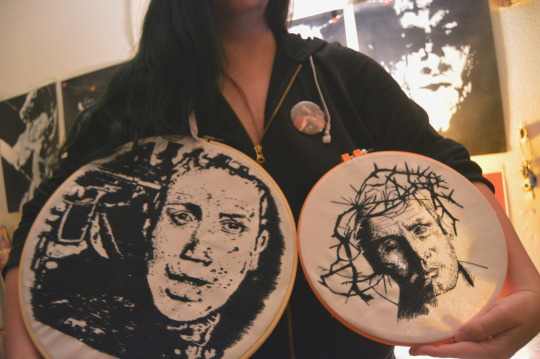
Hi I made both of these in the span of 3 months and you should absolutely take one of these home.
( Strixes’ Sabre )
#come and see#stalker#soviet film#bigcarte#embroidery#embroidered#artist on tumblr#Andrei Tarkovsky#Сталкер#Иди и смотр#Elem Klimov#arthouse#art house#tarkovsky#klimov
7 notes
·
View notes
Video
vimeo
[M/V] Zivert feat. Every Day Rain - Vydykhai (2022) from kurogatsu on Vimeo.
director: Aibat Rakhmanov
dop: Yan Kasyanov
editor: Kurogatsu
editor’s assistant: Ali Amangeldin
producer: Mira Evgenievna
production: colabalab
line producer: Dauren Karimberdy
pm: Sergey Khramov
first ad: Yevgeniya Moreva
pd: Yuliya Yuki Kravchenko
pd assistants: Sergey Kryukov
Marat Dauytbayev
Rustakh Batayev
Adlet Mendibayev
stylist: Nikolay Ovechkin
stylist’s assistant: Maxim Polyakov
mua: Mary Dav
mua: Nargiz Aminova
Zivert hairstylist: Sergey Smoot
hairstylist: Hristina Circe
hairstylist’s assistant: Feyruza Beisenova
photographer: Miras Makbuz
administration: Alexsandrov Amin
administration assistant: Artur Romanyuk
Andrey Kleimenov
Ayan Bugibayev
catering: Ramil Malkeyev
casting: Viktor Brodyanoy
models:
Milana Vinogradova
Ismail Nurai
Elena Agapova
actor:
Frank Valdes Lopez
gaffer: Alexandr Amunts
lighting: Timur Hodzhaev
Askhat Musabaev
Dmitriy Klimov
Sergey Bolkun
Ruslan Salamov
Kaiyrzhan Kaiyrtai
Valentin Pushkarev
Serik Serikbay
crane/dolly: Vyacheslav Kropachev
Vitaliy Kuzmin
first ac: Nikolay Rabotyagov
wind machine : Asyl
technical suppliers: Mark2, Cinerental
0 notes
Text
Rusia ameninţă Republica Moldova cu „repetarea scenariului ucrainean”. România e numită „cea mai înapoiată ţară din NATO”
Vicepreşedintele Comitetului pentru Afaceri Internaţionale din Consiliul Federaţiei Ruse ameninţă Chişinăul cu „repetarea scenariului ucrainean”.
Senatorul Andrei Klimov a scris pe Telegram că Maia Sandu riscă să repete politica sinucigaşă a lui Zelenski, conform deschide.md.
Senatorul rus s-a întrebat retoric dacă Maia Sandu vrea să facă din Republica Moldova o provincie a României, pe care a…
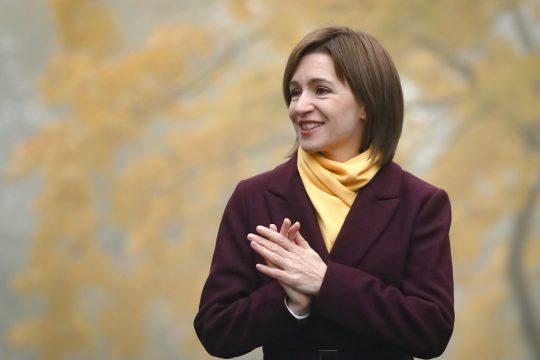
View On WordPress
0 notes
Text
Come and See
youtube
https://youtu.be/zjIiApN6cfg

.
.
Andrei speaking to the significance of “Come and See” to historical Russian’s cultural position on War.
youtube
0 notes
Text
Senator Andrey Klimov, head of Federation Council Committee for the Defense of State Sovereignty, thinks that Russian citizens who left the country can be considered ‘foreign agents’ — a suspect category under current Russian law.
Both TASS and RIA Novosti report that Klimov was speaking specifically of people who left Russia during its invasion of Ukraine, and especially since the start of mobilization on September 21:
If we read carefully the law concerning the control over persons under foreign influence, a person who went abroad — isn’t such a person under foreign influence? Certainly. And if that person signed a written statement, saying that they condemn everyone here, or something along those lines, they have committed a political act — a political act under foreign influence. Does this law apply to them? Easily.
Klimov explained the implications of the law:
I wouldn’t entrust them with any work in the government sphere. I would recommend not voting for them, for any post at all. I would be extremely surprised if such people began to teach in state universities or public schools.
It isn’t clear what kind of a “written statement” Klimov was referring to. Last summer, Latvia required Russians entering the country to sign a letter condemning the Russian aggression in Ukraine. Earlier, in March, the Bank of Georgia also required Russian clients to sign similar statements before opening an account.
The Kremlin press service says that the president has no position on this question, and that Klimov “perhaps” expressed his personal opinion.
In 2022, the Russian ‘foreign agent’ law was changed in such a way that this designation could be attached not just to people receiving foreign money, but to anyone found to be under a “foreign influence.”
0 notes
Text
Rusya'dan kritik 'S-400' açıklaması!
Rusya’dan kritik ‘S-400’ açıklaması!
Resmi temaslar için Ankara’ya gelen Putin’in başkanlık ettiği Birleşik Rusya Partisi yöneticisi Andrey Klimov, S-400 görüşmelerinin sükunet gerektirdiğini ve bir sıkıntı olmadığı söyledi.
“HERHANGİ BİR SIKINTI YOK”
Rusya Büyükelçiliğinde basın mensupları ile bir araya gelen Klimov, ikinci S-400 hava savunma sisteminin sevkiyatı konusunda, “Bu görüşmeler sükûnet gerektirir. Zaman zaman dedikodu…
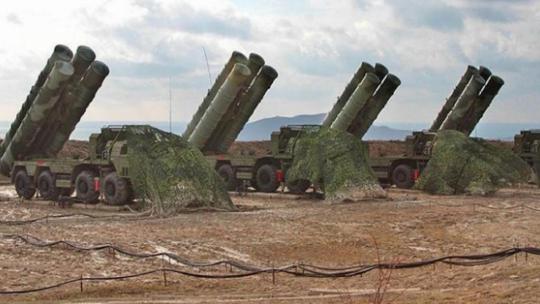
View On WordPress
0 notes
Photo


Azarkant by Andrey Klimov
https://www.youtube.com/watch?v=EEMWW4fx-l0
6 notes
·
View notes
